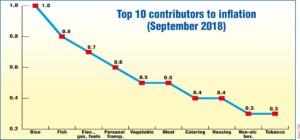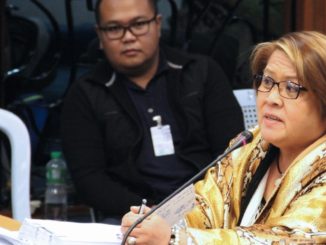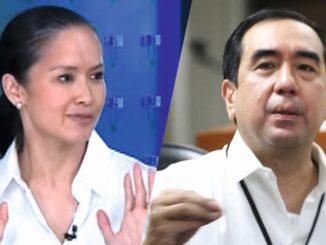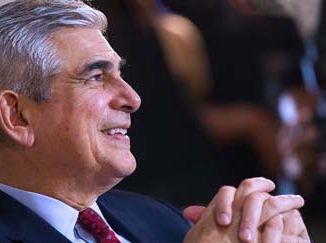
A VICIOUS CYCLE OF MISERY
It is now abundantly clear that President Duterte’s No. 1 problem is not traffic, not drugs, not terrorists, and, not China, but food – the lack or the shortage of it, along with the current stratospheric prices of the people’s main food items – rice, corn, sugar, fish, meat, and vegetables. Plus rapidly rising prices of refined petroleum products, particularly diesel, LPG, and kerosene – the staple fuels of the poor and the middle class.
Decades of neglect by a succession of presidencies account for the current rice shortage and food insecurity.
The present rice crisis began with the Cory Aquino administration with her misplaced agrarian land reform program. Land reform cut up large agricultural lands making them inefficient, less productive, less profitable, and less attractive to investors.
 Average farm holdings were reduced to 1.8 hectares per farmer. The ideal was five hectares per farmer. Banks didn’t want to deal with lands covered by land reform. Abandoned by their landlords, the farmers were left to their own devices, in sourcing their seeds, fertilizers, harvesting and milling, warehousing and marketing.
Average farm holdings were reduced to 1.8 hectares per farmer. The ideal was five hectares per farmer. Banks didn’t want to deal with lands covered by land reform. Abandoned by their landlords, the farmers were left to their own devices, in sourcing their seeds, fertilizers, harvesting and milling, warehousing and marketing.
The government itself abandoned the farmers. Organized to be a bank for farmers, the state-owned Land Bank became a commercial bank instead, charging higher interest rates than peer private commercial banks.
Land reform was supposed to curb communist insurgency which was an agrarian unrest. Instead, the New People Army reached its peak strength of 35,000 armed regulars during the Aquino presidency, more than double than under Ferdinand Marcos. The Philippines has the world’s longest running communist insurgency.
Responding to a much stronger enemy, the army reacted violently and with viciousness. So more guns than rice cavans. The result: More human rights violations under Cory Aquino than under Marcos.
Even today, the government spends seven times more money to buy guns and war materiel and to maintain a formidable armed force than what it spends for agriculture. It’s still more guns than rice cavans.
 Agriculture has only a budget of P49.8 billion. The Department of National Defense and the Philippine National Police have a combined budget of P356 billion. Actually, if government spends more money to produce food, it won’t need to employ nearly 500,000 soldiers and policemen to contain insurgency and keep the peace.
Agriculture has only a budget of P49.8 billion. The Department of National Defense and the Philippine National Police have a combined budget of P356 billion. Actually, if government spends more money to produce food, it won’t need to employ nearly 500,000 soldiers and policemen to contain insurgency and keep the peace.
As former President Estrada said, “a hungry stomach knows no law.” Indeed, during Erap’s short-lived presidency, agriculture grew by 6.2% – a growth record that is still unbeaten. The college dropout president focused on relentless rice production and multiplying the carabao population.
Today, the NPA still has at least 5,000 armed regular fighters and is capable mounting raids on municipalities, including those within a 50-km radius from Manila. And the number of poor Filipinos remain the same – 25 million.
The world reduced poverty to 10% of the population in 2015.
 The Philippines failed to reach that 10%, one of the very few countries in the world to fail to solve its poverty. Poverty stalks the land, bedeviling 21% of the Filipino population. Why did the Philippines fail to lick its widespread poverty? Lack of food. Poverty in this country is a question of having adequate food at reasonable prices.
The Philippines failed to reach that 10%, one of the very few countries in the world to fail to solve its poverty. Poverty stalks the land, bedeviling 21% of the Filipino population. Why did the Philippines fail to lick its widespread poverty? Lack of food. Poverty in this country is a question of having adequate food at reasonable prices.
In fact, if you believe economist Cielito Habito, a country doesn’t even need to produce its own food to have food security. Singapore, he notes, imports 90% of its food and yet has food security.
The Philippines used to have record foreign reserves of more than $80 billion. The country did not use it to import enough food. Instead, our Bangko Sentral lent $1 billion of those reserves to the bankrupt countries of Europe.
Land reform made our farmers poorer. It reduced agricultural growth in relation to economic and population growth. With reduced production, rice became very expensive, eating up more than 20% of expenses of households.
Including other food items like cereals, fish, meat, and vegetables, food is 60% of household expenditures. Higher prices of these items meant reduced purchasing power for the Filipino. Reduced purchasing power meant edging towards poverty.
Less rice and less food on tables of households made Filipinos not only rebellious but malnourished. Filipinos are the most malnourished people in the entire ASEAN region. Because Filipinos were malnourished, they also became stupid, but not stupid enough to make them the most stupid among citizens of ASEAN.
Because they were stupid, Filipinos elected the wrong leaders – who were/are incompetent, corrupt, and vicious and with the wrong priorities.
The result is one of the worst income inequality ratios in the world. Of 25 million Filipino families, only 100 families have ruled the Philippines in the last 100 years. In the last 50 years, our seven presidents came from only five families. Now, that’s what I call inclusion. However, our tourism officials billed it as “it’s more fun in the Philippines!”.
Meanwhile, our newly minted billionaires, who became atrociously rich by converting land reform areas into subdivisions and condos, invested more in casinos, than in agriculture.
Up to the 1980s, agriculture accounted for more than 20% of economic production, what we call Gross Domestic Product or GDP. Today, agriculture’s share, at 2000 constant prices, is a measly 8.5%, and going down.
As recently as 2013 and 2014, agriculture’s share of GDP was still double digit, at 10%. By 2015, thanks to neglect by President Benigno Simeon Cojuangco III and the incompetence of his Agriculture officials, the share fell below 10% — to 9.5% and in 2016, to 8.8%. Agriculture’s share of GDP of 8.5% in 2017 is a record low.
— Tony Lopez



